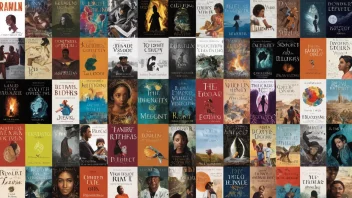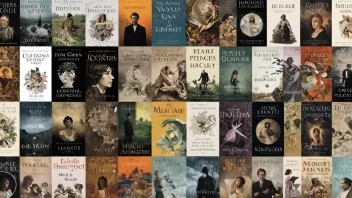Creating multi-dimensional characters is one of the most challenging yet rewarding aspects of fiction writing. Characters are the lifeblood of any narrative; they drive the plot, evoke emotions, and resonate with readers. A well-crafted character can elevate a good story to greatness, while a flat character can leave readers disengaged. This article delves into the intricacies of character development, exploring techniques, examples, and the importance of complexity in crafting compelling fictional personas.
Understanding Multi-Dimensional Characters
Multi-dimensional characters, also known as complex or three-dimensional characters, are those that possess depth, personality, and relatability. They have distinct traits, motivations, and flaws, making them feel real to readers. Unlike one-dimensional characters, who often embody a single trait or stereotype, multi-dimensional characters can evolve and grow throughout the story.
The Importance of Depth in Characters
Depth in characters serves several important functions in fiction:
- Engagement: Readers are more likely to invest emotionally in characters that feel real and relatable.
- Conflict: Complex characters often embody conflicting desires or motivations, which can create rich, engaging narratives.
- Theme Exploration: Multi-dimensional characters can act as vehicles for exploring larger themes and ideas within the story.
Techniques for Creating Multi-Dimensional Characters
There are various techniques writers can employ to create characters that resonate with readers. Below are some effective methods:
1. Develop a Backstory
Every character has a past that shapes their present behavior and motivations. A well-developed backstory can explain a character’s actions and choices, providing context to their personality traits. Consider the following:
- Childhood Experiences: How did their upbringing influence who they are today?
- Key Life Events: What significant events have shaped their worldview?
- Relationships: How do their relationships with others impact their personality?
2. Create Flaws and Strengths
No one is perfect, and characters shouldn’t be either. Flaws make characters relatable and human. Consider giving your characters a mix of strengths and weaknesses:
- Flaws: What are their insecurities or issues that they struggle with?
- Strengths: What are their abilities or traits that help them succeed?
- Growth: How can their journey lead to overcoming their flaws?
3. Use Dialogue Effectively
Dialogue is a powerful tool for revealing character. Through what characters say and how they say it, readers can glean insights into their personalities:
- Voice: Each character should have a distinct voice that reflects their background and personality.
- Subtext: What characters don’t say can be just as telling as what they do say.
- Interactions: How characters react to others can reveal their inner motivations and conflicts.
4. Show Internal Conflict
Internal conflict adds depth to characters by showcasing their struggles and dilemmas. This can involve:
- Contradictory Desires: Characters may want two opposing things at once, creating tension.
- Moral Dilemmas: Characters might face choices that test their values and beliefs.
- Character Arcs: How do they change over time as a result of their internal conflicts?
Examples of Multi-Dimensional Characters in Literature
To better understand the concept of multi-dimensional characters, let’s examine some notable examples from literature:
1. Elizabeth Bennet from "Pride and Prejudice"
Jane Austen’s Elizabeth Bennet is a prime example of a multi-dimensional character. Her intelligence, wit, and strong opinions make her relatable, but her prejudice and initial misjudgments create internal conflict that drives the plot.
2. Jay Gatsby from "The Great Gatsby"
F. Scott Fitzgerald's Jay Gatsby is a complex character whose mysterious past and obsessive love for Daisy Buchanan reveal the darker side of the American Dream. His wealth masks deep insecurities, making him both tragic and relatable.
3. Offred from "The Handmaid's Tale"
Margaret Atwood's Offred is a multi-dimensional character who grapples with her identity, autonomy, and the oppressive society she lives in. Her internal conflicts and nuanced emotions highlight the struggles of women in dystopian settings.
Common Pitfalls in Character Development
While creating multi-dimensional characters can be rewarding, there are common pitfalls that writers should avoid:
1. Stereotyping
Falling into clichés or stereotypes can result in flat characters. Instead, strive to break stereotypes and create unique, individual personas.
2. Lack of Consistency
Characters should behave consistently within the context of their established traits and backstories. Sudden changes in behavior without sufficient reasoning can confuse readers.
3. Overcomplicating Characters
While complexity is important, overly complicated characters can become difficult to follow. Strive for a balance between depth and clarity.
The Role of Multi-Dimensional Characters in Thematic Exploration
Multi-dimensional characters can serve as vehicles for exploring themes within a narrative:
- Identity: Characters can grapple with their sense of self, reflecting broader questions of identity in society.
- Morality: Complex characters often face moral dilemmas, prompting readers to engage with ethical questions.
- Societal Issues: Characters’ experiences can reflect and critique societal norms and challenges.
Conclusion
Creating multi-dimensional characters is essential for engaging storytelling. By employing techniques such as developing backstories, incorporating flaws and strengths, using dialogue effectively, and showcasing internal conflict, writers can craft characters that resonate with readers. Literary examples demonstrate the power of complexity in character development, while avoiding common pitfalls ensures that characters remain relatable and engaging. Ultimately, multi-dimensional characters enrich narratives, allowing readers to explore deeper themes and emotions, fostering a lasting love for literature.






